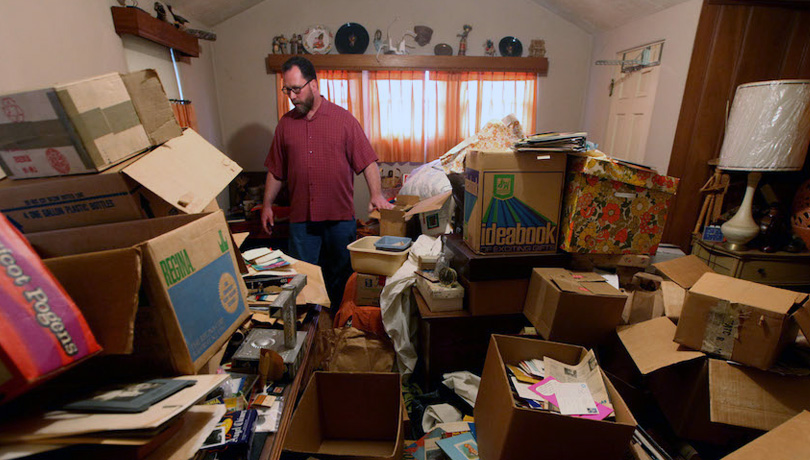From photos and documents to emails and apps, the accumulation of digital clutter has become second nature. But have you ever paused to consider the mental toll of this behavior? Digital hoarding, or the excessive saving of digital content with difficulty deleting it, is more than just a minor inconvenience—it has deep ties to mental health challenges like stress, anxiety, and depression. While it may not be as visible as physical hoarding, its effects are just as impactful. Understanding this hidden problem can pave the way for better mental well-being and healthier digital habits.
What is Digital Hoarding?
Digital hoarding involves an inability to part with digital items such as:
- Emails, even spam or outdated messages
- Photos, including duplicates and blurry images
- Files downloaded “just in case” but never used
- Subscriptions and apps long forgotten
Unlike physical hoarding, digital clutter remains hidden in virtual spaces like cloud storage, hard drives, or inboxes. With endless storage options available, it’s easy to keep saving without feeling the impact—until the mental strain becomes noticeable.
Key Signs of Digital Hoarding
A growing sense of overwhelm or disorganization in managing digital spacesdiscard items.
Struggling to delete files, even when they’re no longer useful
Emotional attachment to digital possessions, such as feeling guilty when deleting old photos

The Mental Health Effects of Digital Hoarding
The connection between digital hoarding and mental health issues is supported by growing research. Here’s how it can affect your well-being:
1. Depression
Studies reveal that excessive digital clutter contributes to depression. The constant reminder of incomplete tasks—like emails to answer or files to organize—creates a sense of failure and lowers self-esteem. Research shows that digital hoarding behaviors account for nearly 19% of the variance in depression levels.
2. Anxiety
The “just in case” mentality drives anxiety, as people feel compelled to save files for fear of needing them later. This perfectionism often spirals into stress when managing large amounts of disorganized data. Females, in particular, are more likely to experience heightened anxiety due to digital hoarding, with a staggering 37% link between these behaviors and anxiety symptoms.
3. Stress
The overwhelming volume of digital files can lead to cognitive overload, a state where the brain struggles to process excessive information. This constant state of “mental clutter” can amplify stress, making even simple tasks feel unmanageable. Studies suggest that digital hoarding accounts for 15% of the variance in stress levels.
Need Hoarding Cleanup? We’re Just a Call Away
& Ready to Respond Quickly!

Why Do People Hoard Digital Files?
Emotional Attachment
Much like physical hoarding, many feel emotionally tied to their digital possessions. Old photos, for instance, may hold sentimental value, making deletion emotionally distressing.
Fear of Loss
The fear of accidentally deleting something important creates an “everything is necessary” mindset. This is often tied to a fear of regret or missing opportunities.

Perfectionism
The belief that all information might be useful someday leads to compulsive saving. Perfectionist tendencies reinforce the need to keep things “just in case,” fueling anxiety.
Convenience and Social Acceptance
Unlike physical hoarding, digital hoarding remains hidden, which often delays intervention. It’s easy to justify saving files when storage space seems limitless and disorganization isn’t visible.
Tips to Overcome Digital Hoarding
You don’t need to let digital clutter rule your life. With consistent effort and some key strategies, you can regain control of your digital space and mental health. Here’s how:
1. Declutter Your Digital Spaces
- Start Small: Begin with manageable categories like emails or photos.
- Delete Duplicates: Use software tools to identify and remove duplicate files.
- Adopt the “One-Year Rule”: If you haven’t accessed a file in a year, consider deleting it.
2. Organize Files Systematically
- Create Clear Folder Structures: Use labeled folders for easy navigation.
- Name Files Intuitively: Descriptive names help you find what you need quickly.
3. Practice Mindful Saving
- Pause Before Saving: Ask yourself if you need the file.
- Limit Subscriptions: Unsubscribe from unnecessary newsletters or app notifications.
4. Use Digital Tools Wisely
- Set Up Automatic Backups: Avoid fear-driven saving by knowing your important files are safe.
- Schedule Regular Decluttering Sessions: Treat it like spring cleaning for your devices.
5. Seek Professional Help
If the emotional weight of digital hoarding feels overwhelming, consider seeking hoarding help through therapy. Cognitive-behavioral therapy (CBT) techniques, for example, can address underlying behaviors and emotions tied to digital clutter.
Comparison: Digital Hoarding vs. Physical Hoarding
| Aspect | Digital Hoarding | Physical Hoarding |
| Visibility | Hidden in digital devices | Visible in physical spaces |
| Social Acceptance | Often socially acceptable | Often stigmatized |
| Emotional Impact | Causes anxiety, stress, and guilt | Causes similar emotional distress |
| Space Constraints | Cloud and hard drives seem limitless | Physical spaces are finite |
Both forms of hoarding share underlying psychological mechanisms like fear of loss and emotional attachment, but digital hoarding can be harder to detect and address.
Why Digital Decluttering Matters
Digital clutter may not take up physical space, but its mental toll is undeniable. By addressing digital hoarding, you can:
- Reduce cognitive overload, making it easier to focus
- Improve mental health by reducing stress and anxiety
- Create a sense of accomplishment through organized systems
Taking small, consistent steps can transform your relationship with your digital environment—and, in turn, your overall well-being.
Conclusion
The rise of digital hoarding is a modern-day challenge with profound implications for mental health. From depression and anxiety to cognitive overload, the hidden impact of unchecked digital clutter is becoming clear. By understanding the emotional drivers behind this behavior and taking actionable steps to declutter, you can lighten your mental load and create a healthier relationship with technology.
LifeCycle Transitions understands the challenges of letting go, whether it’s physical clutter or digital hoarding. Our services are tailored to help you navigate transitions with ease, offering personalized solutions to declutter your life.
Let us guide you toward a more organized and stress-free digital future.
Author

- Helping families navigate major life transitions—death, divorce, downsizing,
relocation, and more—with compassion and turnkey solutions.
Over 500 successful outcomes and counting.
Latest Post
GuidesJuly 8, 2025What Is the T.E.A. Program and Who Is It For: Your Complete Guide
GuidesJuly 8, 2025Understanding Hoarding Disorder: Symptoms, Causes, and Solutions
GuidesJuly 8, 2025Navigating Elder Care Insurance and Medicare Coverage for Home Care Services
GuidesJuly 1, 2025Budgeting and Senior Financial Planning for Long-Term Care




